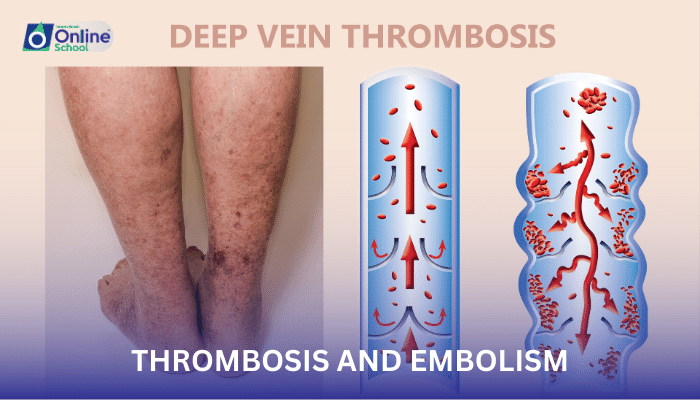
Learning Outcomes:
i. Define thrombosis and explain its role in the formation of blood clots.
ii. Differentiate between a thrombus (blood clot) and an embolus, highlighting their origins and potential consequences.
iii. Discuss the factors that contribute to thrombus formation, including endothelial damage, blood flow alterations, and hypercoagulable states.
iv. Explain the implications of thrombus formation for cardiovascular health, including the risk of myocardial infarction, stroke, and pulmonary embolism.
v. Recognize the importance of preventive measures and timely treatment for thrombosis and its potential complications.
i. Thrombosis: The Formation of Unwanted Guests in the Bloodstream: Thrombosis is the process of blood clot formation within a blood vessel. These clots, also known as thrombi, can obstruct blood flow, leading to serious complications if not promptly addressed.
ii. Thrombus vs. Embolus: A Tale of Two Blood Clots
While both thrombi and emboli are blood clots, they differ in their origins and potential consequences:
Thrombus: A thrombus forms within the blood vessel where it originates. It usually adheres to the damaged inner lining of the blood vessel, the endothelium.
Embolus: An embolus is a blood clot that breaks off from its original location and travels through the bloodstream to lodge in another vessel, potentially causing blockage.
iii. Factors Contributing to Thrombosis: A Delicate Balance Disturbed
Several factors can contribute to thrombus formation:
Endothelial damage: Damage to the endothelium, the inner lining of blood vessels, exposes the underlying connective tissue, triggering the clotting cascade.
Blood flow alterations: Slow or turbulent blood flow, such as in varicose veins or aneurysms, increases the likelihood of clot formation.
Hypercoagulable states: Certain medical conditions, such as cancer, pregnancy, and prolonged immobility, can increase the tendency of blood to clot.
iv. Implications of Thrombosis for Cardiovascular Health: A Looming Threat
Thrombus formation can have significant consequences for cardiovascular health:
Myocardial infarction (heart attack): A thrombus in a coronary artery can obstruct blood flow to the heart muscle, leading to a heart attack.
Stroke: A thrombus in a cerebral artery can block blood flow to a part of the brain, causing a stroke.
Pulmonary embolism: An embolus that travels to the pulmonary arteries, which carry blood from the heart to the lungs, can cause a pulmonary embolism, a potentially life-threatening condition.
v. Preventive Measures and Timely Treatment: A Proactive Approach
Preventive measures can significantly reduce the risk of thrombosis:
Lifestyle modifications: Maintaining a healthy weight, regular exercise, and a balanced diet can help prevent thrombosis.
Smoking cessation: Smoking damages the endothelium, increasing the risk of clot formation.
Management of underlying conditions: Proper management of medical conditions such as hypertension, diabetes, and high cholesterol can help reduce the risk of thrombosis.
Anticoagulant therapy: For individuals at high risk of thrombosis, anticoagulant medications can be prescribed to prevent blood clot formation.
Thrombosis, the formation of blood clots within blood vessels, poses a significant threat to cardiovascular health. Understanding the factors that contribute to thrombosis, the implications of thrombus formation, and the importance of preventive measures and timely treatment is crucial for maintaining cardiovascular well-being and minimizing the risk of serious complications